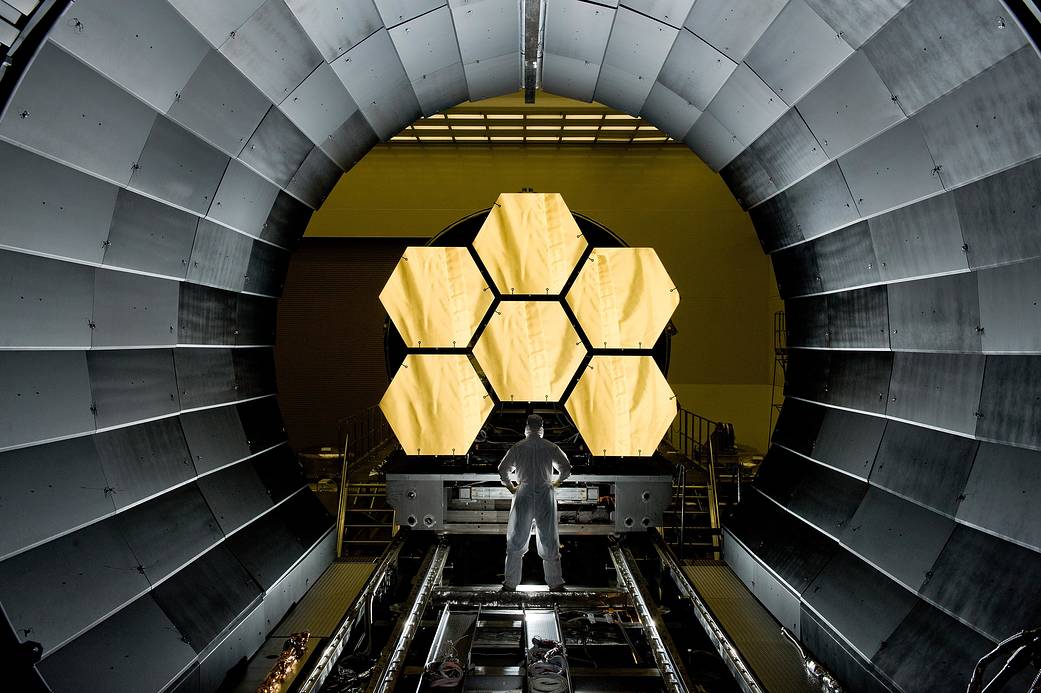Seasonal Changes in Exoplanet's Atmosphere Could Signal Alien Life

Seasonal changes in an alien planet's atmosphere could signal the presence of extraterrestrial life, new research suggests.
Researchers aim to expand our ability to hunt for aliens by creating a new search protocol to be used with next-generation telescopes. As described in a paper published yesterday (May 9) in The Astrophysical Journal Letters, a research team at University of California, Riverside's (UCR) Alternative Earths Astrobiology Center has used the way Earth's atmosphere changes from season to season to develop a model for chemical signs that could indicate life.
Searching for life in the universe is tricky — clearly, since we have yet to find concrete evidence of extraterrestrials. Since exoplanets that we suspect could hold life are too far to visit, scientists study their atmospheres instead, hoping that biological clues in the atmosphere could indicate the presence of life. These clues, known as biosignatures, will be observed with specialized, next-generation telescopes like the James Webb Space Telescope, which is currently being assembled and will measure the various gaseous components that make up these far-off atmospheres. [Meet Proxima b: The Closest Exoplanet We Know Explained (Infographic)]
Unfortunately, single atmospheric gas measurements have the potential to be misleading. Typical biosignatures like the presence of oxygen and methane can be produced without the presence of any life, so false positives and confusing data are an issue, Edward Schwieterman, a NASA Postdoctoral Program fellow at UCR and co-author on the new work, said in a statement.
By observing seasonal changes in these biosignatures, instead of the biosignatures alone, you have more information about the potential for life, according to lead author Stephanie Olson, a graduate student in UCR's Department of Earth Sciences.
Olson and her team developed this unique framework, which shows how seasons and sunlight can affect atmospheric composition. Such seasonal changes to Earth's atmosphere are affected by life; for instance, more plants grow in summer, leading to less carbon dioxide and more oxygen over the region where it's occurring, according to the statement.
"Atmospheric seasonality is a promising biosignature because it is biologically modulated on Earth and is likely to occur on other inhabited worlds," Olson said in the statement. "Inferring life based on seasonality wouldn’t require a detailed understanding of alien biochemistry because it arises as a biological response to seasonal changes in the environment, rather than as a consequence of a specific biological activity that might be unique to the Earth."
Breaking space news, the latest updates on rocket launches, skywatching events and more!
While this work is specific to Earth, scientists could use this framework to study alien planets as well, Olson explained. Although the telescope technology that would ideally use this framework is still on its way, "It’s really important that we accurately model these kinds of scenarios now, so the space and ground-based telescopes of the future can be designed to identify the most promising biosignatures," Schwieterman said.
We have yet to discover concrete evidence of extraterrestrial life out in the cosmos, but by improving the frameworks that we will use with advanced, future telescopes, we are inching ever closer.
Email Chelsea Gohd at cgohd@space.com or follow her @chelsea_gohd. Follow us @Spacedotcom, Facebook and Google+. Original article on Space.com.

Chelsea “Foxanne” Gohd joined Space.com in 2018 and is now a Senior Writer, writing about everything from climate change to planetary science and human spaceflight in both articles and on-camera in videos. With a degree in Public Health and biological sciences, Chelsea has written and worked for institutions including the American Museum of Natural History, Scientific American, Discover Magazine Blog, Astronomy Magazine and Live Science. When not writing, editing or filming something space-y, Chelsea "Foxanne" Gohd is writing music and performing as Foxanne, even launching a song to space in 2021 with Inspiration4. You can follow her on Twitter @chelsea_gohd and @foxannemusic.

